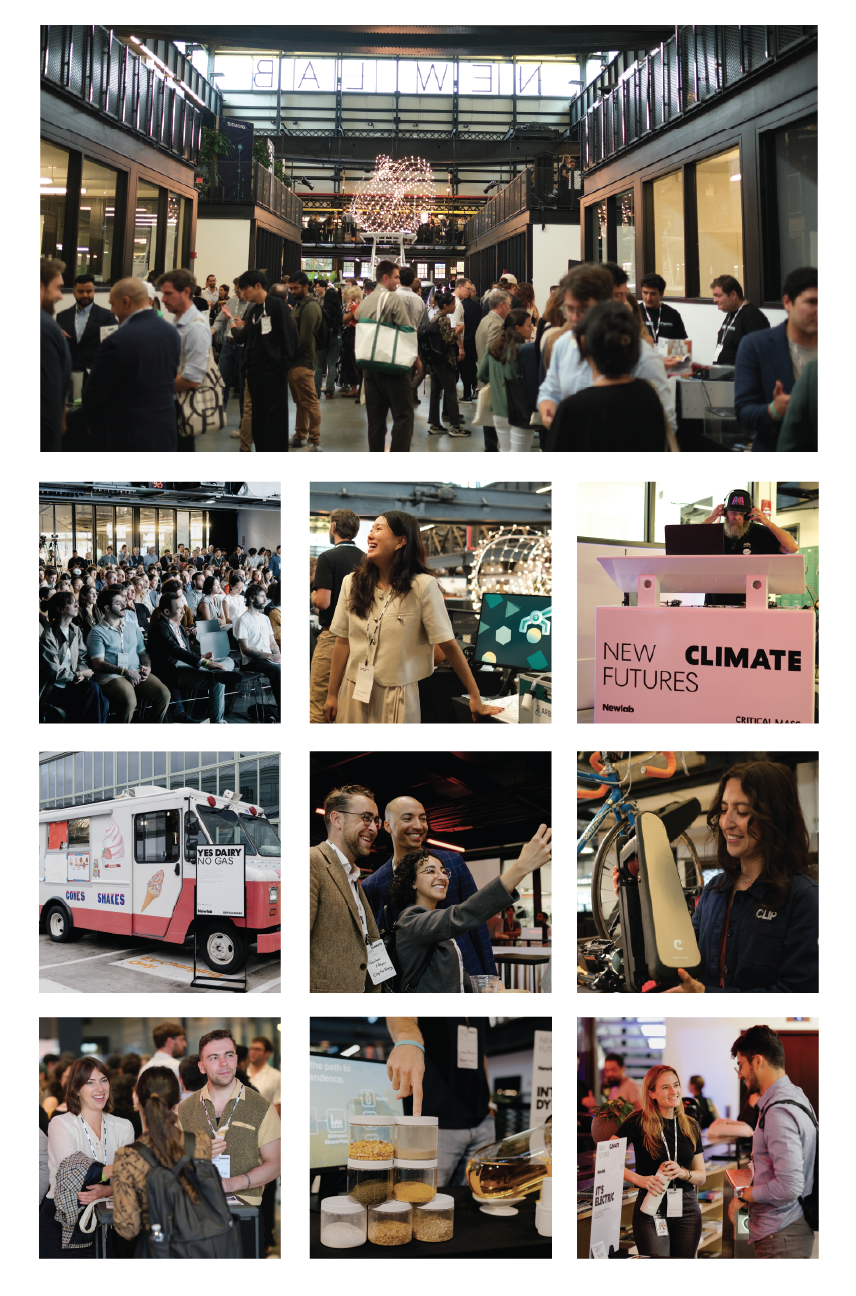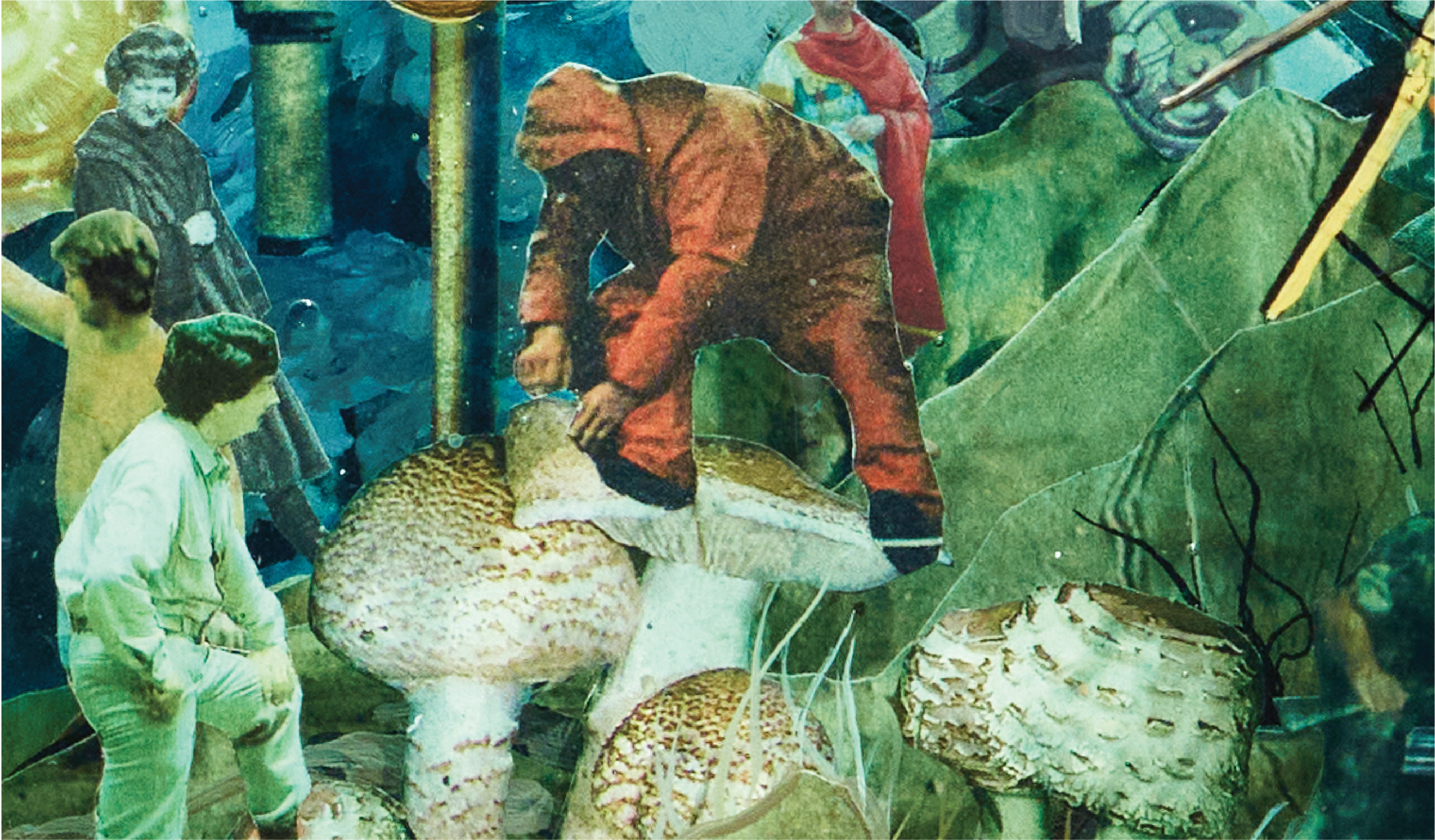Five Takeaways from New Climate Futures 2025

This year at New Climate Futures, Newlab Brooklyn welcomed over 1,400 founders, investors, policymakers, and industry leaders to explore the critical technologies shaping the future of the climate industry.
More than 70 startups showcased solutions across energy, mobility, industry, and the built environment, each designed to deliver real-world climate outcomes. On stage, leaders shared insights on building partnerships, mobilizing capital, and aligning policy to accelerate the commercialization of critical technologies.
One of the day’s standout moments was a keynote fireside chat with Tom Steyer, Co-Executive Chair of Galvanize Climate Solutions, who emphasized the urgent need to scale climate innovation with speed and intention.
Steyer, a long-time climate leader, helped make California the largest jurisdiction in the world to adopt a 100% clean energy law and successfully fought efforts by the oil and gas industry to reverse the state’s climate protections.. He also co-chaired Vice President Biden’s Climate Engagement Advisory Council to help mobilize climate voters.
In conversation with Newlab Chief Product Officer, Garrett Winther, Steyer discussed the current state of climate action, shared advice for founders, and identified key challenges facing the sector over the next year. Discover five key takeaways from the talk below.
Ignore the Noise, Focus on the Outcomes
The attention economy is changing how we see the world, but its impact is much stronger in our heads than in the global market. In Steyer’s eyes, “people in the United States don't necessarily know what the truth is.” The stories that get picked up and told here and abroad don’t always reflect the scientific evidence we’re seeing. He emphasized the importance of not getting lost in the noise and focusing on the tangible results.
Compete to Win, Not Just to Play
True to his New York roots, Tom gives us this example, “If you want to be a good basketball player, play basketball against good basketball players. Don't play within your gated community. Because if you're playing within your gated community, I'm pretty damn sure you ain't playing in the NBA.” We all feel the scale of the global competition and the global opportunity, what sets us apart and sets us up for success is being prepared to compete.
“We should stop focusing on [the competition] and start focusing on how fast we can win. That is the issue in front of the people in this room. For all the founders here, for all the people pushing, everybody gets a right to compete. Competing is not winning. I want everyone to have a right to compete. And if they're doing stuff that doesn't work, it's not going to work just because they get a chance. But for the people in this room, we need to compete and win”
Team, TAM, Tech — and Revenue
As someone who has founded multiple startups, Steyer laid out the framework each startup should build their business around.
- Team: who you hire and who is in charge can make or break the company. “It's incredible how important the leadership is.”
- TAM: understanding how big the Total Addressable Market is for your product.
- Tech: “what is your advantage you expect to get? Why are you able to solve something that no one has been able to solve in the last 5,000 years?”
And what should every startup really focus on? “Revenue. Actual customers with money that they are willing to spend. If you don’t have a customer who pays money then you don’t have a business.”
Don’t rebuild the 20th century to solve 21st century problems
A key challenge for makers in the United States is physically building things. Permits and approvals can get in the way of tangible outcomes. When faced with these issues, it’s important for founders to work smarter not harder and to use what already exists to further their goals.
“I'll give you an example. The Intercontinental Railroad was built in four years, 1,700 miles. We've been doing high speed rail since 2008. We've built 19 miles. So, when we think about pain points for all we're trying to do, one of the big pain points is permitting, getting on the grid, building. And here's what I can say. We need to use the existing footprint much more intelligently. We need to use it much more efficiently. Let's use 21st century technology to solve 21st century problems. Let's not try to rebuild the 20th century to solve 21st century problems.”
What everyone will be talking about this time next year
The main takeaway from Steyer and Winther’s discussion was that everyone, everywhere must focus on winning and being the best in their field. He emphasized that America will need to partner with China. We all should be working towards the same goals and should see them as a partner in this fight instead of our competition. However, both of these points hinge on where America will go politically 2026 and 2028. As we approach this fork in the road, Americans will have to decide if they want to continue going further right or come back to the middle. This choice will drastically change the conversation we’re having about climate this time next year.
“Let's see who's going to win. Cheaper, faster, better. Game on”
Missed the livestream? Watch the full stage programing, including Tom and Garrett’s fireside chat, here.
Thank you to our attendees, partners, members, and sponsors, including Siemens, Fictiv, NYCEDC, Crux, and NYSERDA, for making this event possible.




